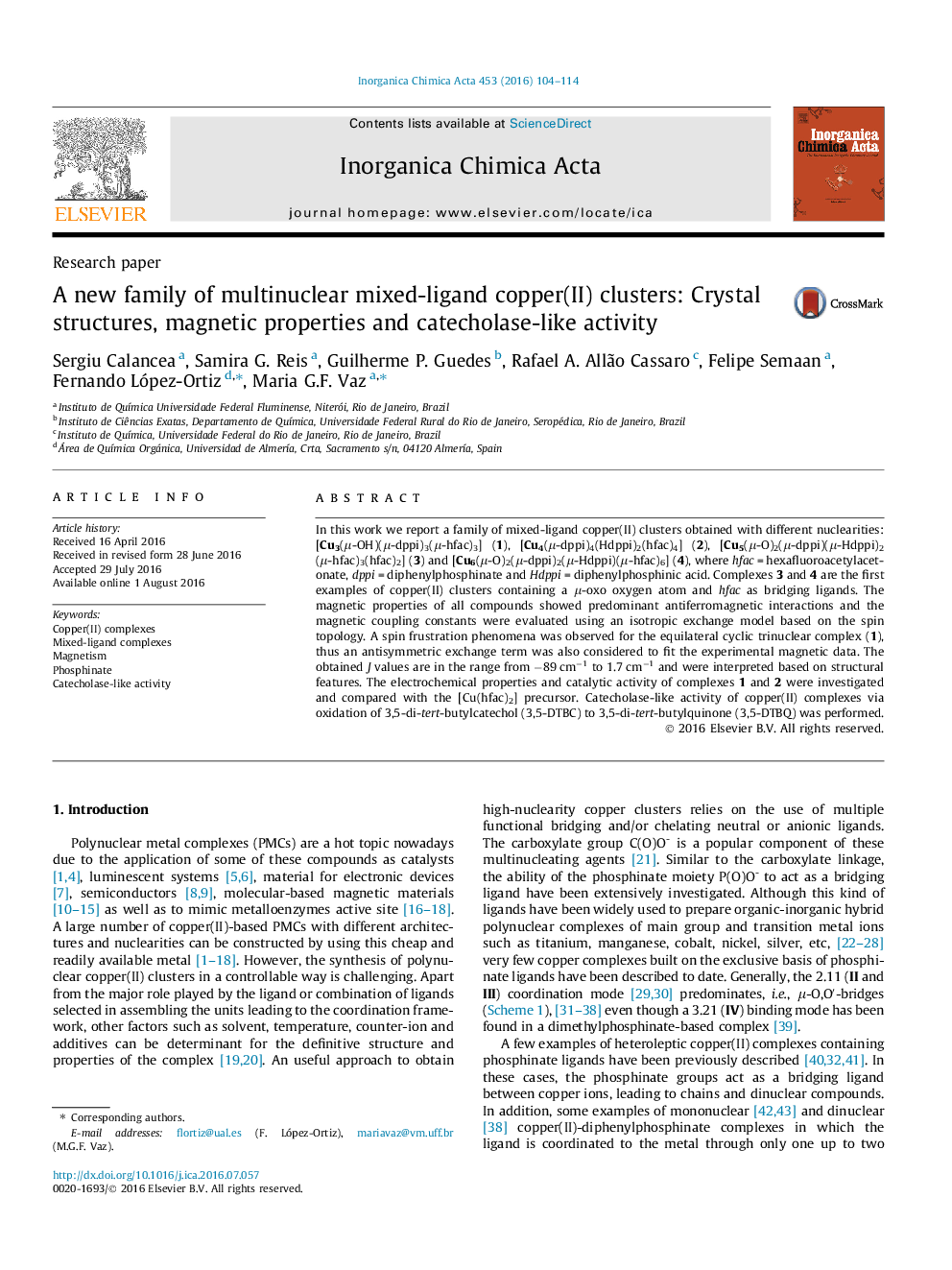| Article ID | Journal | Published Year | Pages | File Type |
|---|---|---|---|---|
| 1307411 | Inorganica Chimica Acta | 2016 | 11 Pages |
•Mixed-ligand copper(II) clusters with different nuclearities have been synthesized.•The magnetic studies revealed predominant antiferromagnetic interactions.•Catecholase-like activity of copper(II) complexes was studied.
In this work we report a family of mixed-ligand copper(II) clusters obtained with different nuclearities: [Cu3(μ-OH)(μ-dppi)3(μ-hfac)3] (1), [Cu4(μ-dppi)4(Hdppi)2(hfac)4] (2), [Cu5(μ-O)2(μ-dppi)(μ-Hdppi)2(μ-hfac)3(hfac)2] (3) and [Cu6(μ-O)2(μ-dppi)2(μ-Hdppi)(μ-hfac)6] (4), where hfac = hexafluoroacetylacetonate, dppi = diphenylphosphinate and Hdppi = diphenylphosphinic acid. Complexes 3 and 4 are the first examples of copper(II) clusters containing a μ-oxo oxygen atom and hfac as bridging ligands. The magnetic properties of all compounds showed predominant antiferromagnetic interactions and the magnetic coupling constants were evaluated using an isotropic exchange model based on the spin topology. A spin frustration phenomena was observed for the equilateral cyclic trinuclear complex (1), thus an antisymmetric exchange term was also considered to fit the experimental magnetic data. The obtained J values are in the range from −89 cm−1 to 1.7 cm−1 and were interpreted based on structural features. The electrochemical properties and catalytic activity of complexes 1 and 2 were investigated and compared with the [Cu(hfac)2] precursor. Catecholase-like activity of copper(II) complexes via oxidation of 3,5-di-tert-butylcatechol (3,5-DTBC) to 3,5-di-tert-butylquinone (3,5-DTBQ) was performed.
Graphical abstractA new family of mixed-ligand copper(II) clusters with different nuclearities (Cu3Cu6) was obtained. The magnetic properties of all compounds showed predominant antiferromagnetic interactions. The electrochemical properties and catalytic activity of Cu3 and Cu4 compounds were investigated. Catecholase-like activity of Cu3 and Cu4 clusters via oxidation of 3,5-di-tert-butylcatechol to 3,5-di-tert-butylquinone was performed.Figure optionsDownload full-size imageDownload as PowerPoint slide
